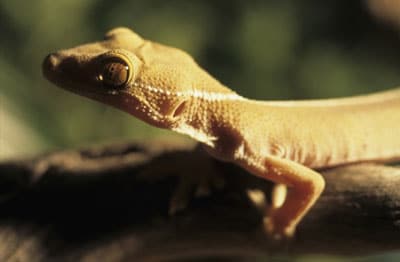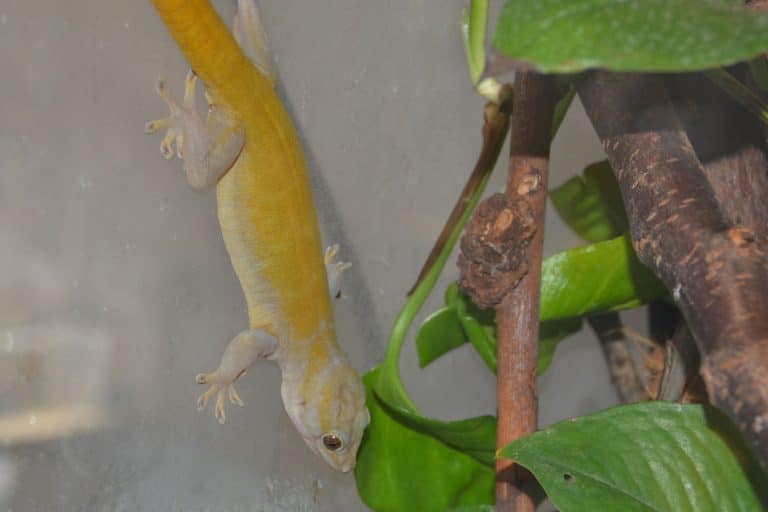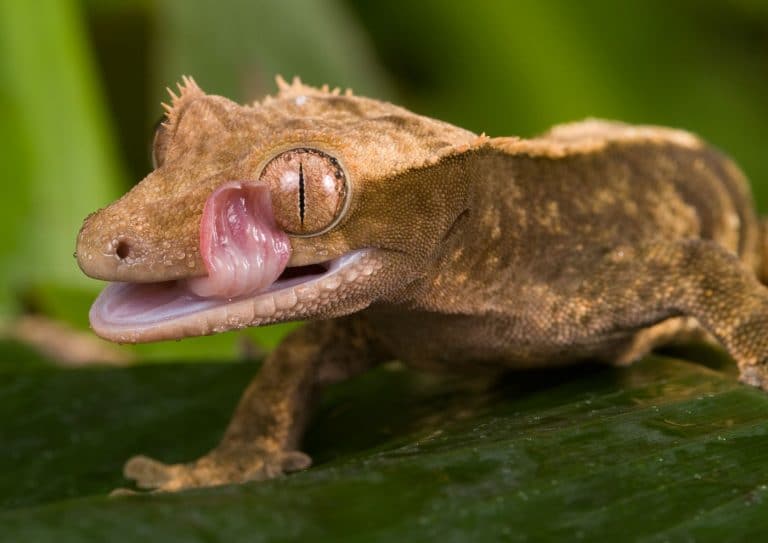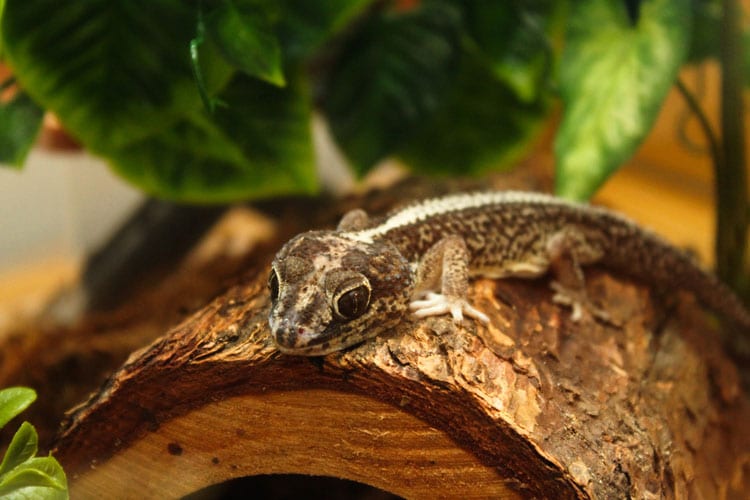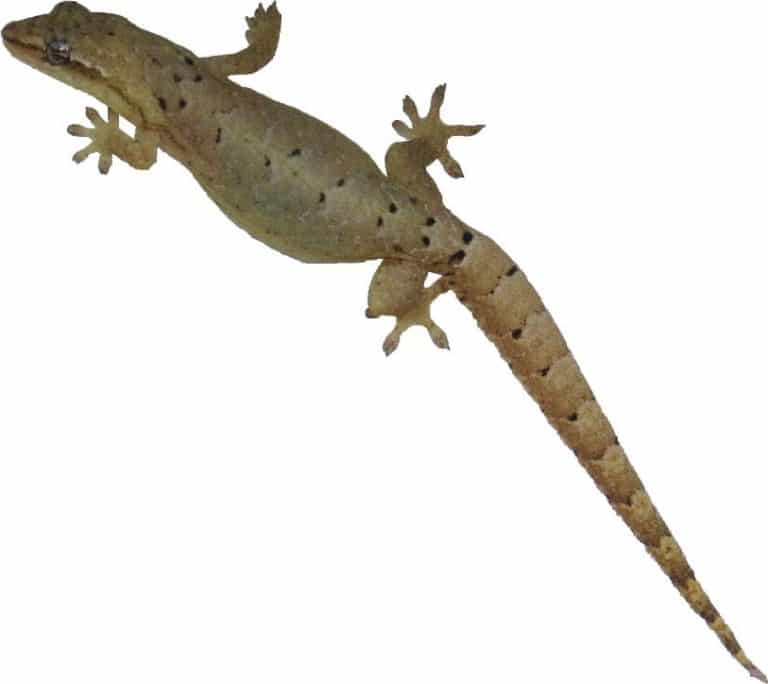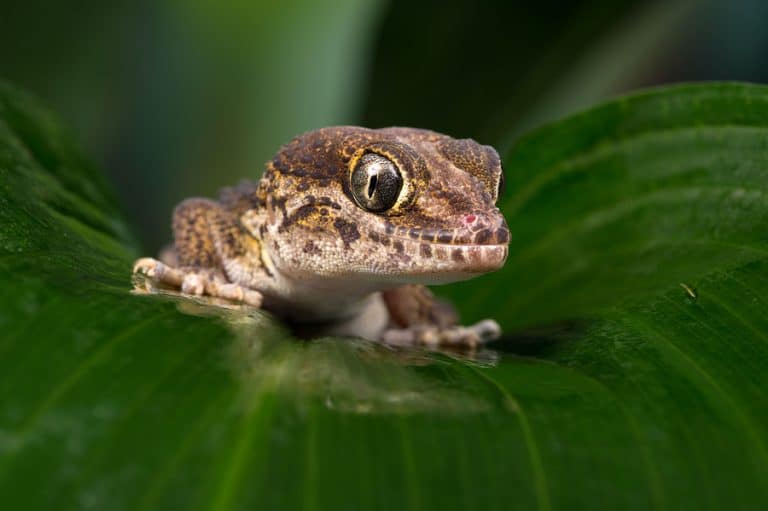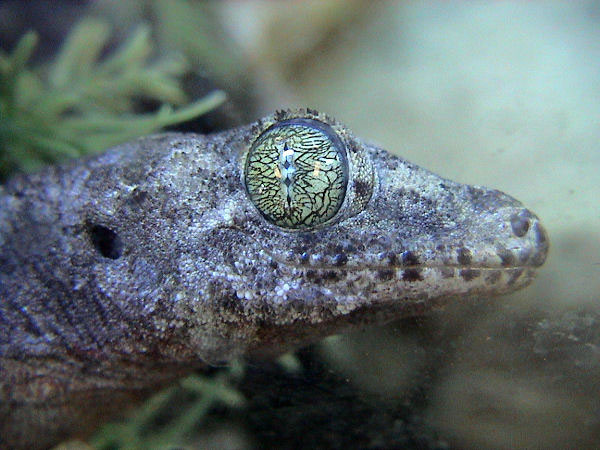White Lined Gecko
White Lined Geckos-Handle Them with Care
White-lined geckos called “skunk geckos” acquired their name from the white line running through the length of their back. These geckos are generally arboreal (tree-dwelling). They are fast and their skin is delicate and susceptible to quick injury; so think twice before handling them often. In the possible absence of an adult, children must refrain from handling them. These reptiles are excellent species for terrarium display. They can reach a length is 11 inches; females are smaller. You have to make thorough research on how to take care of this lizard if you are planning to get one home. On arrival, give it enough time for acclimatization before you even think of handling it.
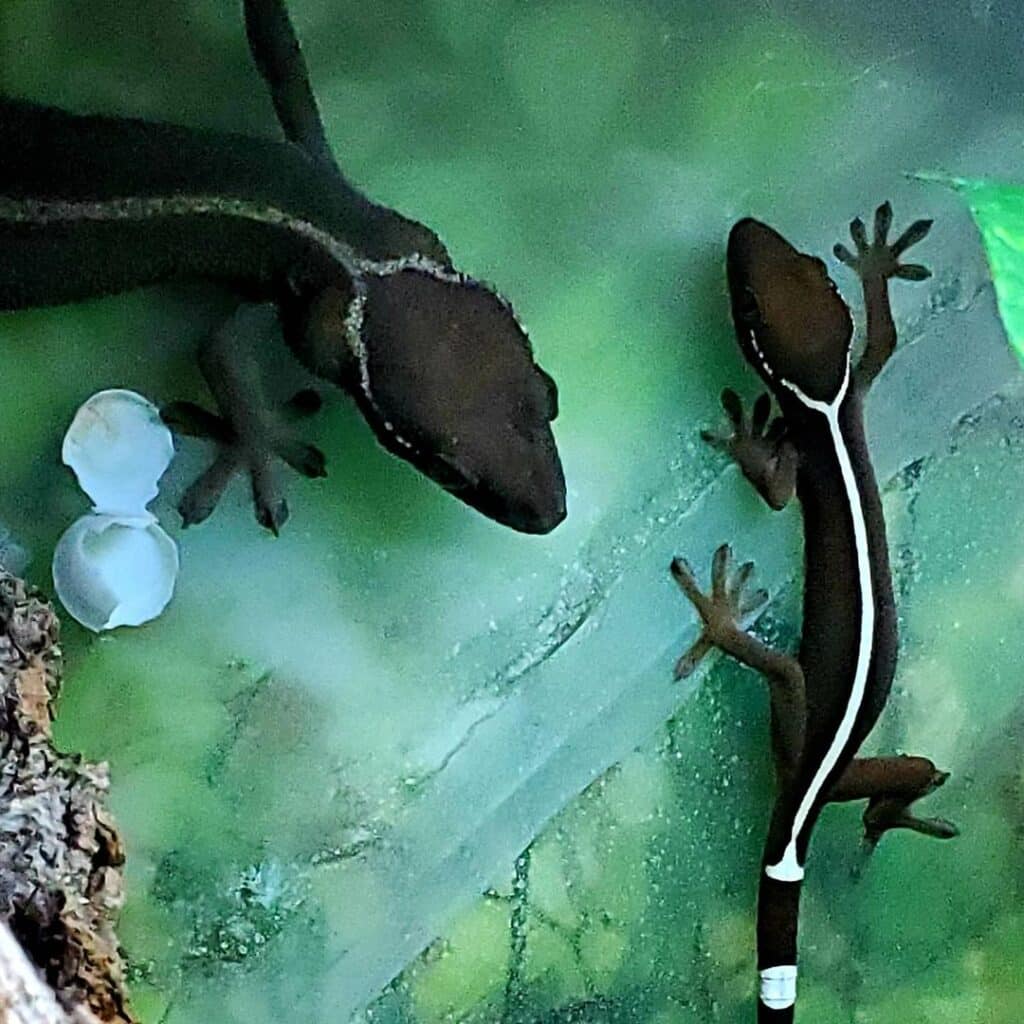
Biology
An adult White Lined gecko acquires a length of 9-10 inches (including tail). Their bodies are green, tan or brown with white stripes on either side of the head that unite running down on the back to the tail’s end. (The tail has broad white bands). Peculiar toe pads enable them to move on vertical surfaces easily.
Feeding
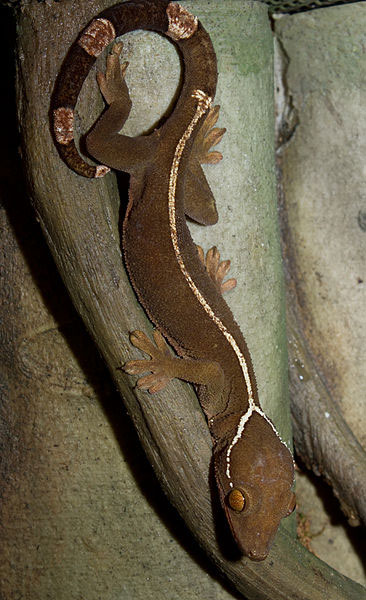
The main diet of these White Lined geckos is crickets. Other prey includes cutworms, silk worms, locusts and roaches. (Infrequently give mealworms and wax worms). Restrict the prey size to the distance between their eyes. Before feeding, gut load the insect prey and dust them twice or thrice, a week with calcium supplement, plus weekly once dust them with multivitamins. Feed the young ones every evening and adults on alternate evenings. Geckos being anxious eaters need enough feeding at a single time. Clear the remaining uneaten crickets from the tank.
Housing White Lined Geckos
A white lined gecko couple needs a 20-gallon tall terrarium. (Keep males isolated, as they are aggressive towards each other). These geckos are active and need taller terrariums for climbing. Terrarium made of glass, with ventilation at the top, are ideal for these geckos.
Substrata
Materials like coconut fiber bedding, moss or peat, Cyprus mulch or paper towel, that holds moisture to keep up the humidity level, make a good substrate for the White Lined geckos.
Lighting
Even though UV lighting is not essential for these nocturnal geckos, facilitate them with a small exposure to UV lighting, as it assists these reptiles to metabolize calcium and prevent the onset of metabolic bone disease.
These geckos emerge in the night. Normally you would use dim red light to see them in the evenings. You need to take precautions to prevent them from burning their feet in the hot light, and hence, use guards.
Breeding
Have a pure male and female pair of geckos. This is possible only you buy them from a trustworthy breeder. It is a complicated process for differentiating a male from a female. Prior to purchasing one from a pet store, go online and do your due diligence to find out the differences. A clear way is to see the vent part. Males have a large tail base with two nubs of flesh on either side of it and two pronounced crescent-shaped scale areas near the vent in a V-shape.
White-Lined Geckos as a Pet
White Lined geckos need very special care in handling, especially because they have a very fragile skin that you can damage if you handle them carelessly. You would do well not to allow children to handle them for the above reason and due to the fact that they are very fast. Make sure that you give your pet gecko enough time to settle in his new captive habitat, before you even consider handling it.

Having discovered a fondness for insects while pursuing her degree in Biology, Randi Jones was quite bugged to know that people usually dismissed these little creatures as “creepy-crawlies”.

